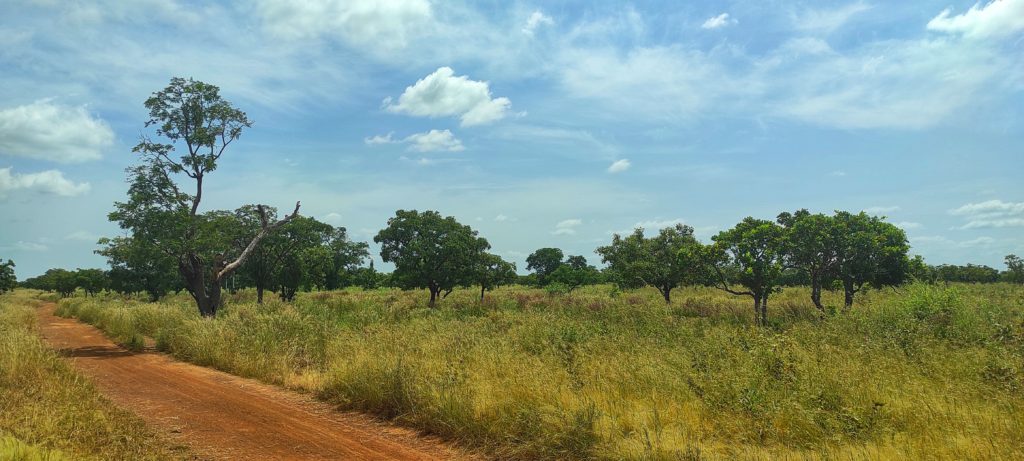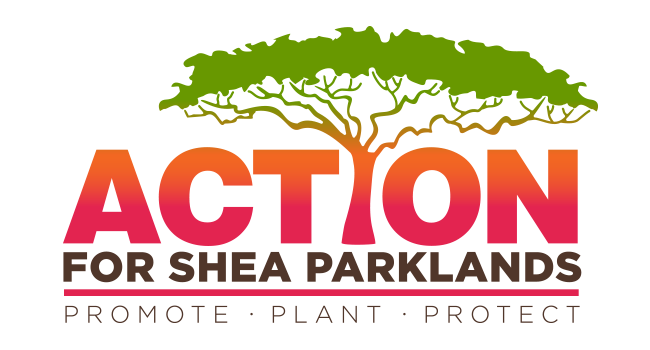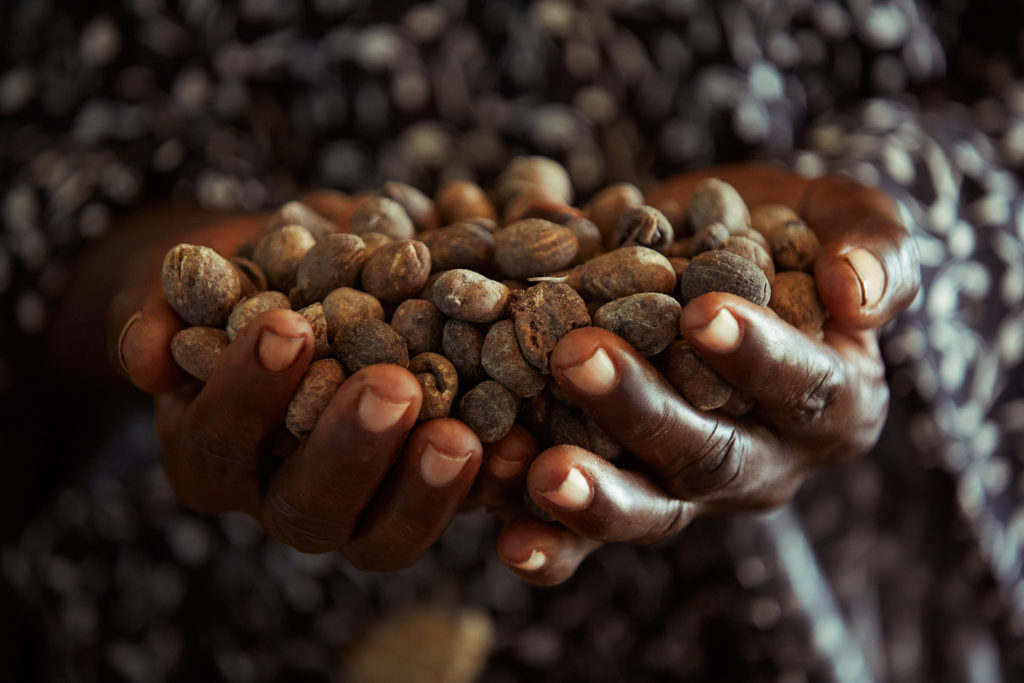
Shea is a huge global commodity and there is a good chance you have either consumed it today or applied it to your body through cosmetics, shampoos or even medication. Despite annual exports bringing $200m to the producing communities, shea is traditionally hand collected by rural women farmers. Between May and August, 16 million women farmers collect the fallen fruit from shea parklands across Africa. The work is hard and laborious, with women walking several miles in hot and humid conditions to collect them. The shea trees used to grow within communities but those trees are now few and far between due to growing rural populations. There is the added risk of scorpions and snakes deep in the undergrowth of the parklands.
The shea fruit is plum like and edible but difficult to transport as it rots quickly, the shea butter eventually comes from the precious kernel inside. Often the fruit on the floor has rotted or been eaten by insects and wildlife, so just the husk remains to be taken back to the community. These are then parboiled in large pots over open fires to remove any flesh and sterilise them. The first bit of recycling happens here as the wastewater is full of nutrients that can be used to water nearby crops. The husks are spread out on the ground to dry and takes several days of turning and protecting from livestock and rain!
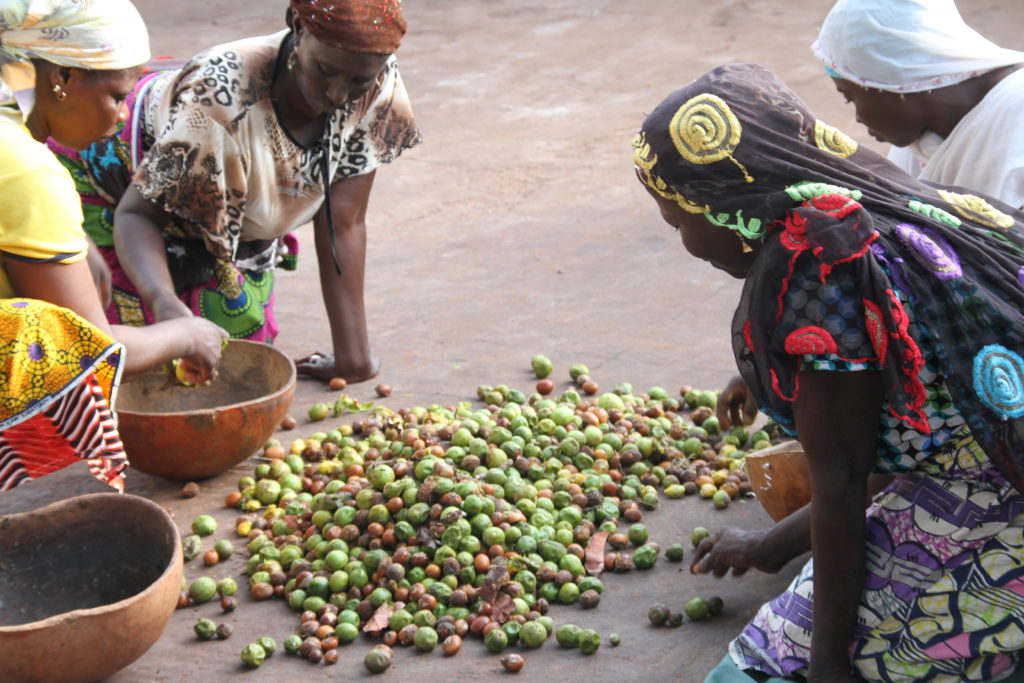
The dry husks need to be split to release the kernel within and this can be done with any implement, even stomping! Once the kernels are released, the first round of quality control is carried out separating the good quality from the bad : another time consuming hand process which takes several days. The prized shea kernels are now bagged and stored. Through the Global Shea Alliance’s (GSA) Sustainable Shea Initiative, a Public Private Partnership, many women farmers have formed cooperatives where, among other things, warehouses have been donated to them from their Partners. This allows them to store and protect the kernels and achieve a good market price for their commodity. The SSI project is in partnership with the United States Agency for International Development (USAID).
The women will decide whether to sell the shea kernels to be processed industrially or to make the shea butter to sell as a commodity. In most cases, they would still opt to make some shea butter for their own consumption, as shea butter plays a vital role in African living.
How the butter is handcrafted
To make shea butter, the kernels are washed several times and dried. After a few days they are ready to be crushed, either by hand, using a giant mortar and pestle, or, if the women are in a co-operative they most likely have a machine. Before releasing the oils from the crushed kernels, they need to be roasted. Whilst firewood is predominantly used, more and more co-operatives are recycling the dried husks and low grade shea kernels as a fuel source. The kernels are roasted over an open fire, either by hand over, using a large wooden tool to continuously stir the seeds or using a metal roaster that is turned with a hand crank, giving the women protection from smoke and burns.
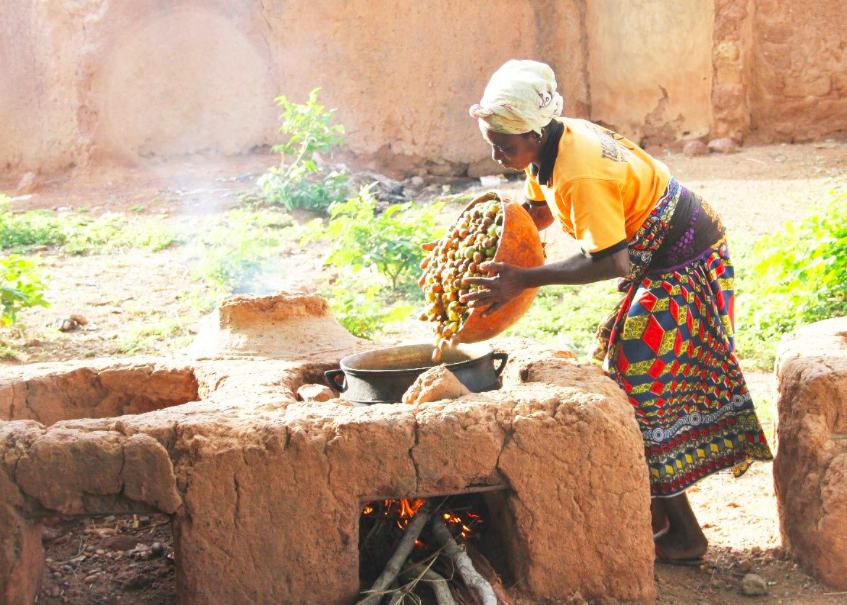
The kernels are now cooled on the floor before going for a second grind. This grinding produces a brown viscous liquid and water is added to make it the perfect consistency for stirring. The ‘almost’ shea butter is stirred or whipped by hand, until the thickened liquid turns lighter in colour, the consistency changes and the water and solids separate out.
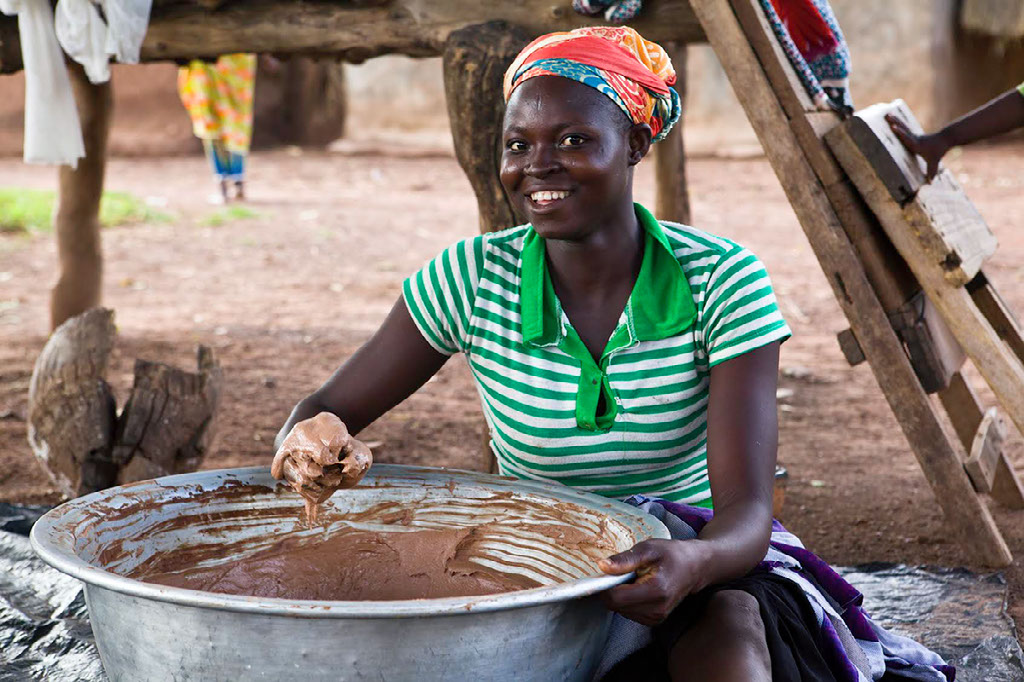
The shea butter, which is now a fluffy white mass floats to the top and is lifted out. The mixing process is really hard work and each aluminium bowl takes about 40 minutes of hand stirring before the separation occurs. The wastewater can be evaporated to reveal waste solids that, when dried, can also be used as fuel for the fire! The shea butter is given a final boil and any impurities are removed . This final step is crucial in ensuring the quality of the shea butter, so the correct moisture content is met. Once cooled and solidified, the shea butter is now ready for use or packaged to sell.
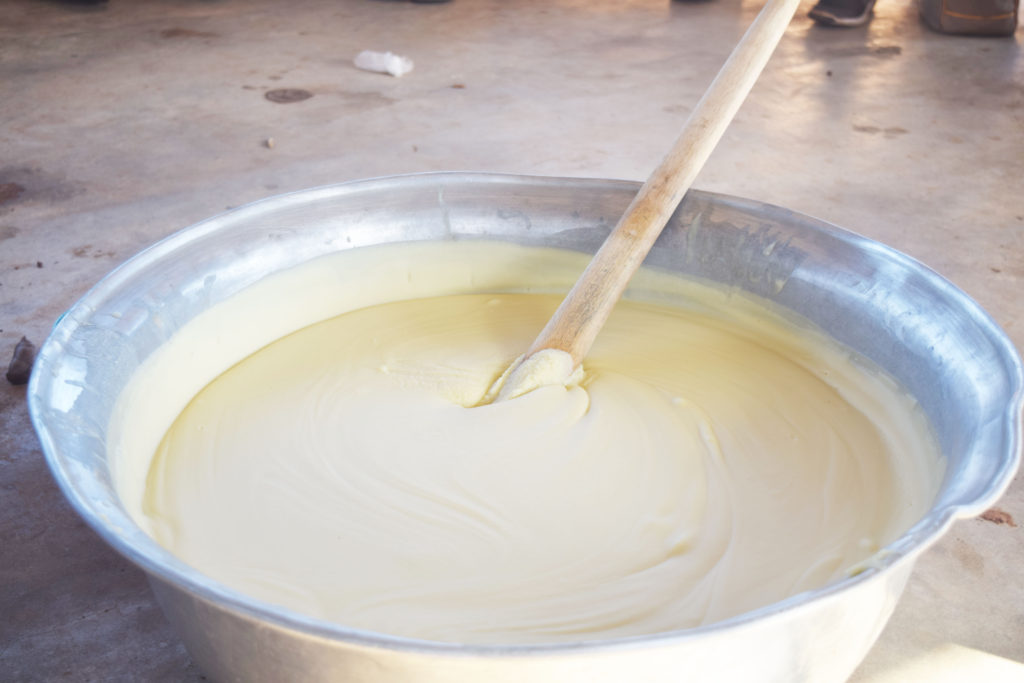
These techniques have passed from generation to generation, as shea is an important part of many African lives. Shea butter is used at home for cooking, for skin and hair, as medication and can also be used to protect buildings from the harsh arid heat.
The shea farming season is at an important time of the year when no other income is available and as the work is predominantly that of women, it is often the only income that is theirs to spend as they see fit, usually on food and clothing, school fees, medical fees and reinvested into their farms.
How you can get involved
So whilst we enjoy the benefits of shea butter in our chocolates, cakes and pastries and while we reap the benefits of beautiful soft skin, spare a thought for the work that goes into collecting those amazing shea kernels for the products we rely on. As the world’s demand for shea increases year by year, the shea parklands are under threat: from commercial agriculture, climate change and pressure from increasing populations. But you can help. Action for Shea Parklands, a project launched by the GSA is committed to planting 10 million trees over the next 10 years, protecting parklands, empowering women shea farmers and training people on good parkland management. Visit our donate page to help us to help you by making a donation today that will plant a tree for years to come.
